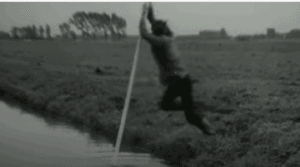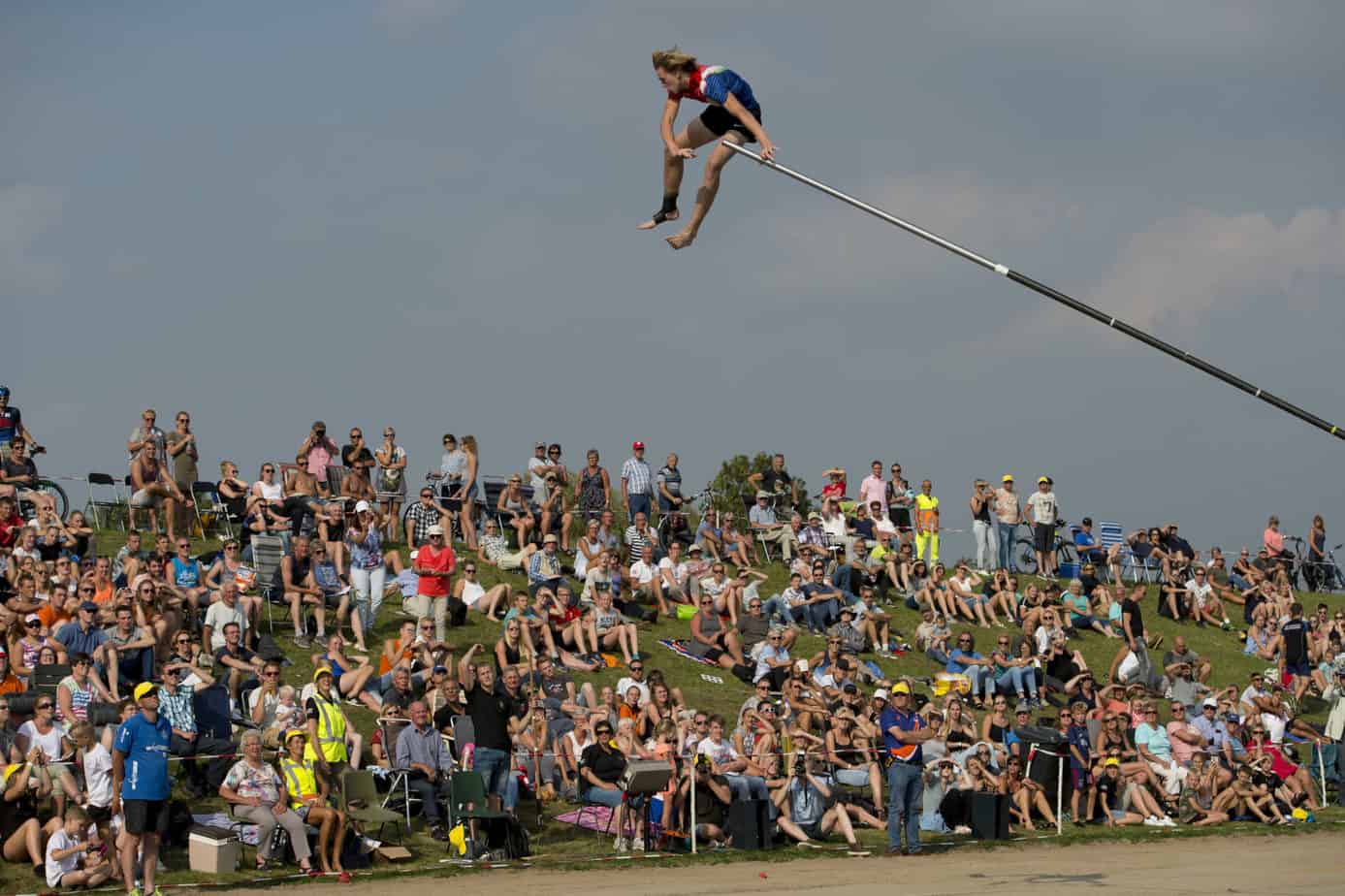The absence of major sports through the Spring of 2020 has gotten us thinking about the lesser known sports that people from around the world might enjoy, and in-turn also be missing. It turns out that a lot of you are into some weird activities. From wildly dangerous to “how is this even a thing” level bizarre to just hilarious, here are just a few of the world’s endless examples of humanity’s ability to turn anything into a contest and to then tweak that contest for optimal violence or amusement.
Fierljeppen is Fierking Bananas
Fierljeppen, or “far leaping” if you speak English, “polsstokverspringen” if you’re not a fan of being able to pronounce things, is a traditional Dutch sport that combines the nation’s many low-lying canals, pole vaulting, and a long history of legal recreational drugs. The object of the contest is to fling yourself from one bank of a canal to the other, utilizing only geometry, physics, and a giant metal pole; whoever gets farthest onto the other side wins.
Fierljeppen originated in the deliciously named Dutch province of Friesland (Editor’s note: we keep telling you, this is not where french fries come from, it’s pronounced like “freeze,” dummy) simply as a way for farmers to navigate the many waterways of an area almost entirely below sea-level. Organized competition traces back to 1771, making the sport older than the United States. Formalized contests began in earnest in the 1950s, with world championships of Fierljeppen taking place annually.
Going by the famed Dutch history book, Toen en Nu – which shockingly translates to “Then and Now” in English; seriously, someone speaking one of these languages was hit in the head at some point and invented the other – the use of poles for quickly navigating irrigated farmlands was common but was never seen as strategic or something to be made into a competition until the 80 Years War against Spain during the 16th century. In 1575 a man named Willem van der Meij was tasked with delivering critical information about an impending Spanish attack to friendly forces. Van der Meij used his hollow pole to hide the message and was able to beat Spanish troops by vaulting across waterways to avoid or outrun the enemy, who were forced to march around the obstacles. This sounds like a much cooler version of the plot of the movie 1917, someone get Sam Mendes on the phone, I just need him for one shot.

Unlike familiar pole vaulting, where an athlete runs a set distance while holding a long pole which is then planted and bent, springing the athlete up and over a bar, and judged by height, Fierljeppen is a contest of distance. Participants utilize a pole between 26 and 43 feet long which is planted on a metal plate at the bottom of a canal. The athlete then sprints from a little more than 65 feet away to gain momentum as he launches himself onto the pole and out across the water at the end of his run. The contestant then makes a mad scramble to get as high up on the pole as possible at the same time as they are moving horizontally across the water. The longer the wait, the higher and more strenuous the vertical climb. Athletes wear strips of inner tube rubber around their ankles to provide a better grip on slippery poles while climbing. All of this is done in seconds, as gravity rapidly takes over and the downward part of the game begins.
Related
- Minneapolis Dude Missed The Gym So Much That He Hopped On A Planet Fitness Elliptical During Their Looting
- Hot College Girl In Bikini Goes Viral For Having A Solid Spiral On A Very Nice Deep Ball
- UFC Fighter Macy Chiasson Rips Bellator’s Valerie Loureda For Showing Her Booty On TikTok
On the way down the athlete can only do so much to control the direction and angle of their landing. With the goal of gaining as much distance as possible, the dismount is very important in Fierljeppen. Athletes orient their bodies on the pole to best enable them to spring from the end of their pole crashing onto the sandy beach below. As nearly 30 percent of all attempts end with the contestant in the water, miscalculation even among experts is common. While the sport is not overly dangerous from a sense of lethality, anything involving falls at these speeds from these heights is going to come with bumps and bruises for every participant. Moments of hilarity are common, as athletes will frequently misjudge their climbs or momentum, or simply miss the pole entirely, landing directly in the water, adding a touch of “funniest home videos” level entertainment to the event, as painful Fierljeppen fail shows.
Do you have a wild hobby or sport? Hit us up on TWITTER, and tell us about it!
🔥 Hot from Side Action 🔥
- Lala Anthony Blames Knicks for the ‘Demise of their Relationship’
- Ja Morant Being Linked to Singer Lotto’s Sister Brooklyn
- Rumor: Instagram Model ‘Ayyyejae’ Connected to Phoenix Suns Is Now Pregnant by NBA Player
- Rumor: Jalen Rose Spotted With New Girlfriend Angela Rye
- Spurs Josh Richardson is Dating Former America’s Next Top Model Runner-Up Tatiana Elizabeth





















